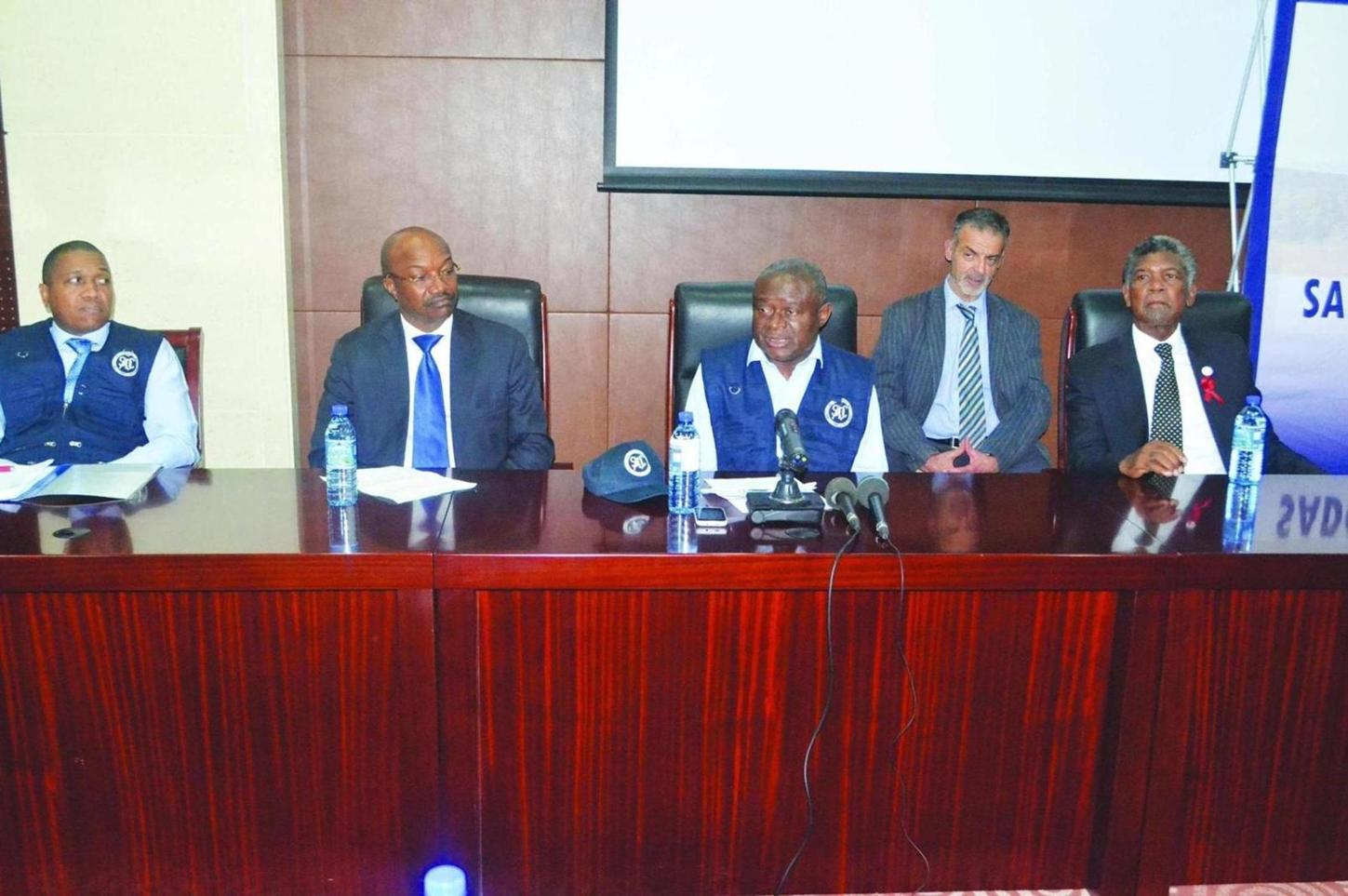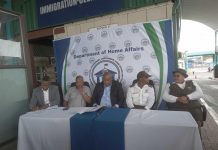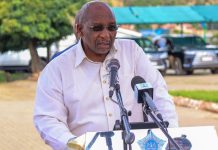Africa-Press – Lesotho. This chapter discusses Lesotho’s political economy while assessing the country’s prospects as one of Africa’s emerging fragile states. It focuses mainly on Lesotho’s present and future prospects given that Lesotho’s history and its political and economic legacies have been covered fully in other chapters in this book.
The structure of the chapter is as follows; it briefly reviews the scope of Lesotho’s Futures research agenda. Then global concerns about State fragility and sustainable development challenges are discussed and applied to Africa.
The relevance of the human security paradigm is also discussed. Lesotho’s current challenges of development, fragility, instability and governance arethen discussed through a review of Lesotho’s governance and development challenges from 2000 to 2016.
The chapter then discusses the role of Southern Africa Development Community, SADC, Politics, Defence and Security Co-operation (PDSC) system in addressing Lesotho’s chronic instability.
The paper concludes by addressing prospects for Lesotho’s survival as a small and fragile State in Southern Africa. Scope of Lesotho’s Futures Research Agenda This chapter is a component of a Lesotho Futures Project being implemented to mark the 50th anniversary of Lesotho’s Independence.
It is a futuristic project that is dedicated to current and future generations of Basotho who are inspired by the concept of human security and the African Union (AU) Agenda 2063 – The Africa We Want campaign that was launched by the AU in 2015[1].
In this context, the Lesotho We Want campaign is informed by the need to address Lesotho’s challenges with a conscious linkage between short, medium and long term governance and development challenges.
In order to enable Lesotho to effectively address the interlinked challenges of consolidating democracy, attaining stability, human security and development, a robust research agenda is needed that will inform a public policy dialogue process which reflects on the past in order to manage the future.
As a Small State in Southern Africa that marked its 50th Year of Independence on 4th October, 2016, Lesotho is currently at a crossroads as all concerned citizens, particularly the youth, assess the country’s performance in the last 50 years and articulate their concerns about governance and development challenges in an environment of serious contestation about possible futures for Lesotho.
Our expectation is that the output of the Lesotho Futures Project should enable citizens to discuss Lesotho’s current and future governance and development challenges and provide a framework for emerging popular coalitions for change to engage with the proposed constitutional, governance and security sector reforms process.
The research agenda will apply scenarios methodology to determine strategic options for Lesotho given the uncertainty about its future prospects. An initial scenarios exercise was undertaken with Lesotho’s Business Community in pre- election dialogue sessions, February, 2015.
[2]This process is inspired by the well-known wisdom that ‘the best way to predict our future is to create it’.
Global Concerns about State Fragility and Sustainable Development Challenges This research agenda on the political economy of Fragile States is undertaken in the context of universal concerns within the international development community about challenges posed by Fragile States in general and State fragility in Africa.
[3] Towards this end, the World Bank and the United Nations (UN) organised a high level Fragility Forum held in Washington DC – USA, March 2016, under the theme, Take Action for Peaceful and Inclusive Societies, which was inspired by Sustainable Development Goal 16 – peace, justice and strong institutions.
This timely forum discussed the sustainable development agenda in a world affected by fragility, conflict and violence. In his key note speech given at the Fragility Forum, the World Bank Group President Jim Yong Kim expressed his concerns as follows: Hope for the future of development assumes a world where nation states are secure and stable and where citizens, are not confronted by fragility, conflict and violence.
While the rest of the world makes progress, the world’s poor will increasingly be concentrated in fragile and conflict-affected countries, estimated to reach almost half of the global total by 2030.
[4]
These globally expressed concerns are a testimony to the challenges posed by State fragility to the achievement of sustainable development goals (SDGs) and need to pro-actively identify its early warning signs to prevent the eventuality of State failure and adverse impacts on affected societies.
Defining State Fragility According to Cilliers and Sisk (Cilliers and Sisk 2013: 2-3), fragility is characterised by low state capacity and poor state performance with respect to security and development.
“A State is fragile when it is unable to provide basic human security and or create the public goods and conditions needed for a minimum of human development.
” The drivers of fragility are clustered into four dimensions; Poor or weak governance; high levels of conflict and violence; high levels of inequality and economic exclusion and high incidence of poverty.
(Cilliers and Sisk, 2013: 2-3).
While Lesotho was not included in the 26 fragile African States listed by Cilliers and Sisk, yet they emphasised the need for a research agenda to forecast fragility using the four dimensions outlined above.
According to the OECD States of Fragility report (OECD, 2016), fragility is defined as “the combination of exposure to risks in five areas—economic, environmental, political, and social and security—and the insufficient capacity of the state or national systems and sub-regional inter-governmental systems to manage, absorb or mitigate those risks”.
[5]
In applying this typology to Africa, the OECD report identifies 35 African fragile States, including Lesotho.
Analysis of Africa’s Fragile States A major study by the International Monetary Fund (IMF) on Africa’s Fragile States (IMF,2015)[6], undertook an extensive review of the theoretical and empirical literature and identified key factors that contribute to fragility as follows: “Weakness (and lack of legitimacy) of government institutions, a poor and unstable economic environment, and a divisive and non-inclusive political context”.
According to the IMF (IMF, 2015), recent research focuses on the multiple dimensions of fragility and instability, where conflict is a possible outcome with linkages to other aspects of fragility.
These multiple dimensions interact and reinforce one another in a vicious circle. Hence, countries are identified as fragile using key indicators that assess economic performance, governance, political stability, and institutional quality.
Some of the key indicators identified in the IMF Report (IMF, 2015) are the following:
l The economies of fragile countries are weak and vulnerable to shocks.
Fiscal balances are in deficit, and high debt often encumbers economic prospects. l There are large internal disparities in income and wealth and in access to services.
l Institutions are not able to provide a stable and fair environment, and the rule of law and enforcement of property rights are weak. l Corruption is prevalent and the judicial system is ineffective.
l Controls on executive power are also ineffective, as the legislative branch of government, the press, or civil society struggle to hold the government accountable.
l
At a social level, ethnic, linguistic, religious or political divides may undermine the development of a national consensus and an awareness of shared interests. l Education, health, and social security systems are poorly organised, underfinanced, and unevenly accessible.
The factors identified above do indicate that fragility has multiple dimensions which have been monitored by international and regional development agencies especially in Africa.
Given the prevalence of State fragility in Africa, the African Development Bank (AfDB 2014) has also developed a Strategy for Addressing Fragility and Building Resilience in Africa for the period 2014-2019[7].
It is based on an understanding of fragility as a condition of elevated risk of institutional stress, instability and possible societal collapse. In terms of this approach, the AfDB recognises that there is no hope of achieving Sustainable Development Goals in Africa without successfully addressing fragility and building resilience in the continent.
The relevance of the Human Security Approach This chapter also seeks to highlight the relevance of the human security perspective in the analysis of Lesotho’s insecurity, instability and fragility problems.
The human security concept was first used in the 1994 United Nations Development Programme (UNDP) Human Development Report, and identified seven human security components including economic, food, health, environmental, personal, community and political security dimensions.
Currently in fragile African States, such as Lesotho, citizens experience insecurity as a result of linked and mutually reinforcing challenges of stability, governance, human security and fragility which undermine prospects for sustainable development.
In the SADC region, the devastating impact of climate change is already being observed through extreme weather events such as droughts and floods, shrinking rivers, reduced crop yields and increased water insecurity.
Lesotho remains vulnerable to the impacts of climate change that are associated with regular and recurrent floods and droughts. The floods, in 2011, were the largest in the country since the 1930s, while the drought, in 2015 and 2016 periods, was the most severe on record.
All the climate models indicate that average mean surface temperatures will rise, but precipitation projections vary greatly. In the medium to long term, these adverse trends are predicted to impact on human security through intensifying competition for scarce national resources which may be aggravated by economic crisis and humanitarian disasters.
These threats all have national and regional implications and require urgent rethinking about African human security strategies which more effectively links all these factors.
The major observation here is that, if national governance systems are not transformed and are pre-occupied with State Security concerns as is the case in Lesotho, then the multi-dimensional challenges of human security will not be fully addressed.
In contrast to a narrow focus on State security, that is security of and for the state, a human security approach therefore seeks new answers to the traditional questions such as security for whom and from what? Hence, a human security model takes people to be at the centre of the security challenge.
This approach should take us beyond the limitations of the current State Security approach in the SADC region which is mainly concerned with the survival of regimes and which safeguards those with vested interests in the status quo.
In the light of the above review of recent state fragility literature, the human security paradigm and the concerns of the international development community, the chapter seeks to apply these insights to Lesotho’s situation, while highlighting the linked challenges of stability, human security and sustainable development.
Review of Lesotho’s Governance and Development Challenges, from 2000 to 2016 This section of the chapter discusses the development of Lesotho into an emerging fragile state by reviewing its governance and development challenges at least since 2000.
Lesotho’s governance and development aspirations are described in the National Vision 2020 document, which is based on a national consensus that was agreed to in 2000/2003.
The Lesotho national visioning process was initiated in the aftermath of the post 1998 post elections crisis in Lesotho and the need for an inspiring long term vision that could establish foundations for national healing and social cohesion[8].
The Lesotho Vision 2020 document which was launched in 2003 outlines the long term aspirations of the Basotho and states inter alia; By the year 2020 Lesotho shall be a stable and prosperous nation at peace with itself and its neighbours.
It shall have a healthy and well developed human resource base, its economy shall be strong, its environment well managed and its technology well established.
This Vision 2020 statement was formulated and endorsed at a well-attended and representative multi-stakeholder national dialogue. [9]The commendable initiative to develop a long term National Vision was inspired by major internal and external determining factors.
Internally, the aim was to stabilise Lesotho’s vulnerable democracy and lay foundations for a united and stable nation in the context of post-conflict peace building following on the 1998 elections crisis.
Externally, the visioning process and methodology was inspired by the African Futures Project of UNDP for implementing National Long-Term Perspective Studies (NLTPS) in Africa.
[10]The NLTPS strategy was a response to the poor performance of previous development management approaches in Africa such as the Structural Adjustment Programmes (SAPs) that were prescribed and driven by International Finance Institutions in the 1980’s and 1990s.
[11]
Lesotho also had the experience of implementing a structural adjustment programme and Enhanced Structural Adjustment Programme (ESAP), supervised through 6 successive IMF/WB Policy Framework Papers from 1988/89 to 1993/94.
[12] Even though these IMF/WB SAP and ESAP frameworks stabilised GOL public finances, they, nevertheless, had no significant impact on the serious poverty situation in the country.
As proposed by the African Futures Project, the NLTPS recognised . . . the strategic importance of a shared national vision, long-term thinking and a stable policy environment for development.
Accordingly, any national vision must provide the people with a sense of direction, discovery, and destiny and must become the guiding framework for national development action.
[13] The success of the NLTPS approach is therefore determined by sustained political commitment, visionary leadership, political stability and the creation of relevant institutions to support the national vision initiative.
National leaders within the public and private sectors are expected to think and act strategically within the framework of a long term vision. In the case of Lesotho, a justifiable critique is that a State-centric approach to the National Vision implementation process has limited the scope and impact of this process. With the year 2020 approaching, there is need to assess the performance of Vision 2020 in terms of its goals and objectives.
Lesotho National Poverty Reduction Strategy Lessons, 2004 to 2012 In order to realize the goals of the Vision 2020 document, Lesotho implemented a poverty reduction strategy (PRS) from 2004 to 2007/08 after the endorsement of the PRSP by the executive boards of the World Bank (WB) and the International Monetary Fund (IMF) in September, 2005.
[14]
This was followed by an Interim Poverty Reduction Strategy (I-PRS) from 2007/08 to 2009. The Lesotho PRS consisted of eight priority areas and three cross-cutting issues and the Public Sector Improvement and Reform Programme (PSIRP).
These PRS priority areas were: employment creation and income generation; improving agriculture and food security, developing infrastructure, deepening democracy, governance, safety and security; improving quality of and access to health and social welfare services; and improving quality of and access to education.
The cross-cutting issues identified under the PRS were HIV and AIDS, gender, children and youth. The transition from the Interim Poverty Reduction Strategy (I-PRS) to an Interim National Development Framework (I-NDF) was ultimately agreed to by Government of Lesotho (GOL) and its Development Partners, in 2009.
The I-NDF was used to guide the budgeting and planning processes in the interim until the proposed National Strategic Development Plan (NSDP) for 2012-2017was finalised.
The National Vision 2020, the Poverty Reduction Strategy (PRS),
Interim Poverty Reduction Strategy (I-PRS) and Interim National Development Framework (I-NDF) and other related development policy papers such as the National AIDS Strategic Plan (NASP) have therefore served two crucial functions.
Firstly, as long and medium term development strategy papers, and, secondly, as major frameworks for development cooperation between Lesotho and its bilateral and multi-lateral Development Partners including the World Bank (WB) and International Monetary Fund (IMF).
Summary of Poverty Reduction Strategy implementation lessons: l
The PRS was based on extensive nationwide consultations which involved 20000 Basotho citizens in 2003, yet this process raised unrealistic expectations without any general and tangible pro-poor outcomes for citizens.
l These extensive nationwide consultations were also encouraged by Lesotho’s Development partners (DPs) to demonstrate national ownership and broad-based participation without clear commitment by the DPs to scaling-up development funding.
l The extensive nationwide consultations did not necessarily establish a culture of effective dialogue and dynamic partnership between GOL agencies and non-state actors.
l
The expected magnitude of additional resources in the form of poverty reduction support grants (PRSG) were not made available by development partners as expected.
l The PRS and I-PRS were therefore weakened as development frameworks since prioritised action plans were externally driven and too ambitious in relation to funding constraints.
l The GOL still lacked institutional capacity to drive change, effective implementation and service delivery. Consequently, there were also absorptive capacity problems despite the declared interest in increasing development funding to Lesotho.
l In identified areas of good performance such as in the National HIV/AIDS response, this was mainly due to effective partnerships between selected GOL implementing agencies and committed Development Partners.
l
An economic growth strategy with an enabling environment for private sector development within the real economy which is so crucial for broad based growth, job creation and poverty reduction was not prioritised.
In assessing the actual impact and outcomes of these various PRS frameworks, the World Bank[15]indicates that between 2002 and 2010 Lesotho made virtually no progress in reducing extreme poverty.
The headcount poverty rate was 57.1 percent in 2010 (national poverty line), accompanied by high inequality, measured at 54.2 percent by the Gini coefficient, itself an obstacle to poverty reduction.
Lesotho’s economic structure and poorly targeted social protection policies are at the heart of high and stagnant poverty and inequality. Low-productivity agriculture remains the main source of income for over 1 in 3 households. The benefits of well-paid public sector jobs mainly flow to the most affluent households. (World Bank, 2016).






